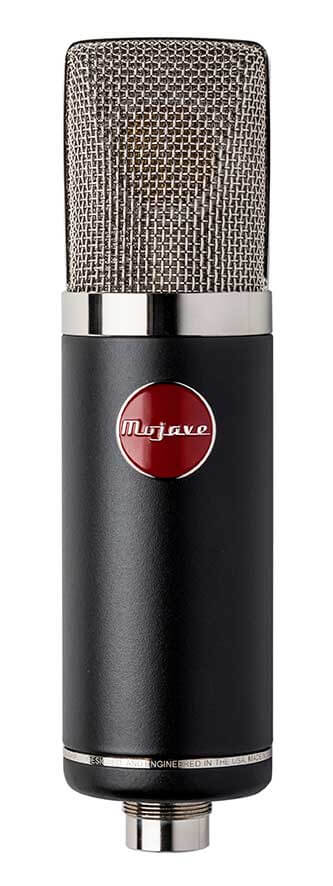Let’s see how the Mojave Audio MA-50 Condenser Microphone stacks up against the competition.
Mojave is a sister company to Royer Labs, one of the premier high-end microphone manufacturers specializing in ribbon mics. Mojave’s specialty seems to be in condenser mics, and their entry level MA-50 is on par with their siblings at Royer.
It’s a large 1” diaphragm condenser, cardioid capsule microphone. The overall build quality is very robust, and the same gold sputtered capsule on some of Mojave’s more expensive microphones is an excellent feature. It’s a transformer-less design, which means no excess noise or coloring of the signal. The frequency response is 20Hz to 20 KHz, and has a maximum spl of 125dB, so it can handle pretty much anything thrown at it, without any issues.
The best application we found for the Mojave MA-50 is capturing acoustics, not just instruments but overall spaces as well. Recording acoustic guitars, there felt to be a quick snap-like response, without getting harsh or brittle, even when placed close to the bridge. There’s a nice proximity effect as well, when backing it off, it opens up the sound a bit more naturally, making placement not a technical issue, but a creative avenue to find that sweet spot. With the low noise response, even with the gain up a bit more, but away from the sound source, it doesn’t get hollow, just creates a bit more air.

A pair of these would be excellent as overheads on a drum kit, or as a way to capture the room sound, as it works great in higher volume applications. Vocally, it’s very robust — there’s plenty of depth, without having to really get on it, and it can accurately capture nuances of even the most dynamic performances well. Included in the package is a sturdy shock mount and carrying/storage case.
With a street price is $495, it’s kind of an easy entry point into the higher-end microphone world, from the consumer and even pro-sumer levels, to what the big boys use. The leap in sound is amazing, but considering the competition, the leap in cost isn’t that big, and the MA-50 is well worth the asking price.
PROS:
Snappy response, well designed, plenty of applications, great on vocals.
CONS:
None.
PRICE:
$495
